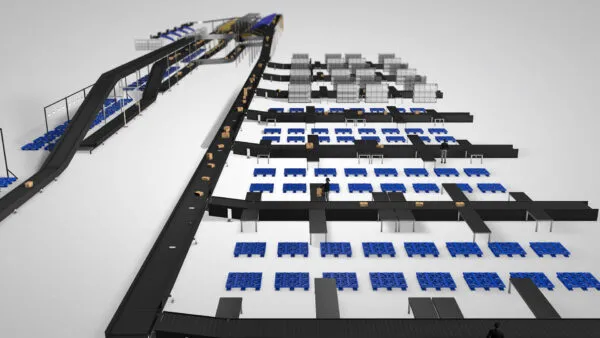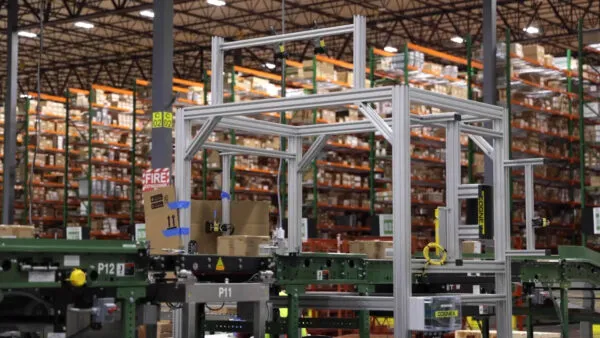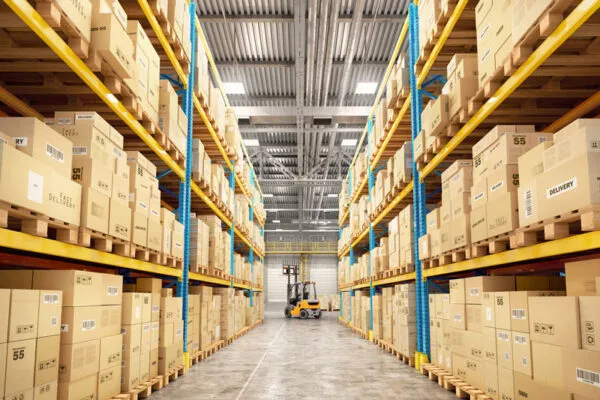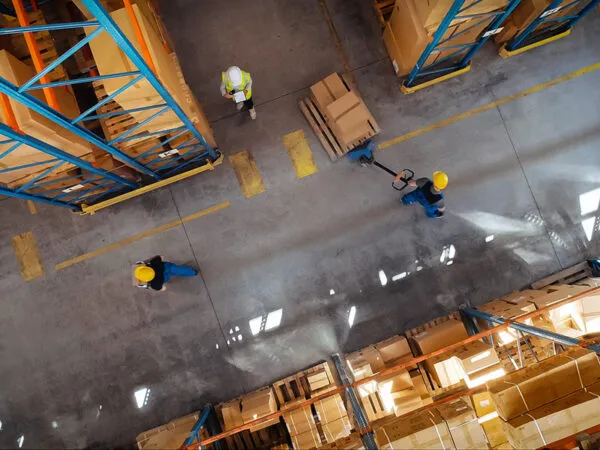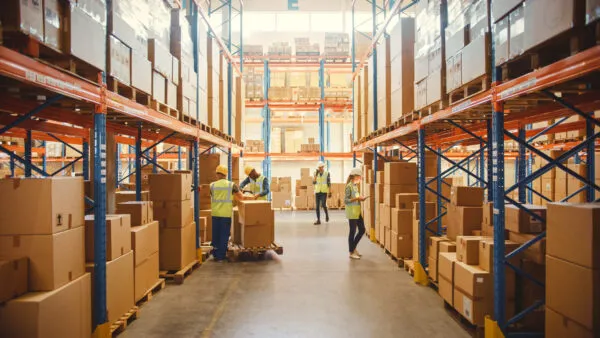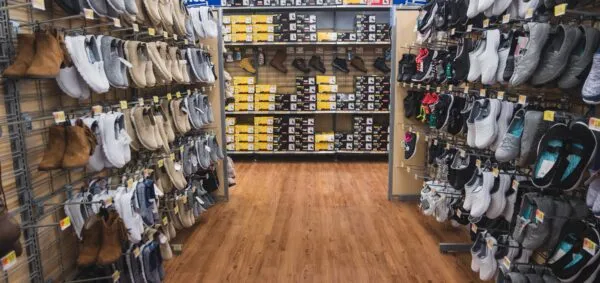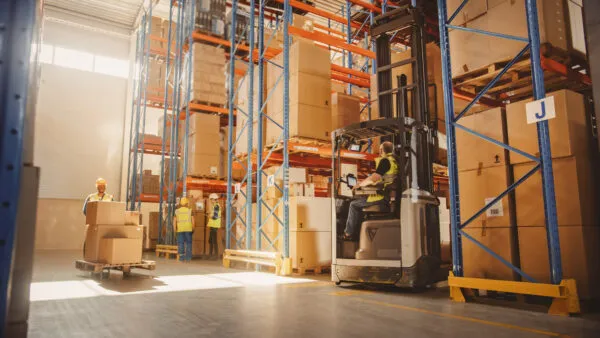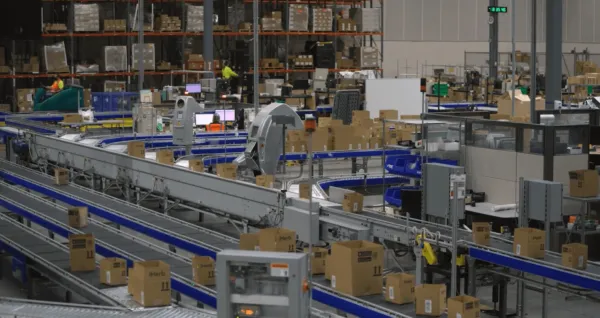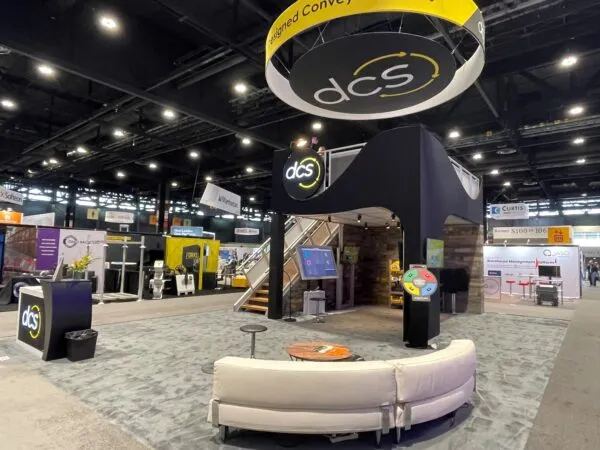This site is protected by reCAPTCHA and the Google Privacy Policy and Terms of Service apply.
Autonomous Mobile Robots: Are They A Fit For Your Order Fulfillment Operation?
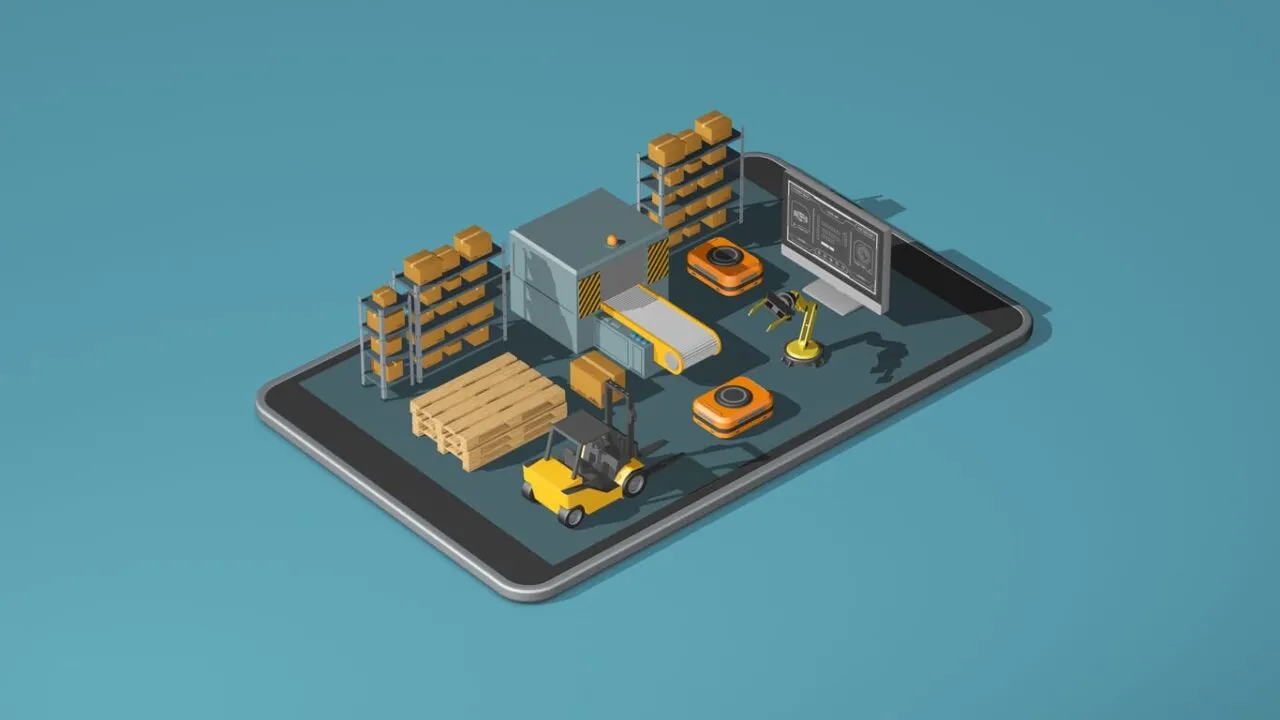
Autonomous mobile robots, or AMRs, for handling of individual totes, cartons or items have captured the attention of distribution center, fulfillment center and warehousing operations managers everywhere. Smaller and generally carrying lighter payloads than their automatic guided vehicle (AGV) cousins, AMRs navigate freely throughout a facility and around any obstacles they encounter (AGVs, in contrast, follow a pre-defined path and stop when they detect an obstruction).
According to the Robotic Industries Association (RIA), AMRs deployed in logistics applications are used frequently for picking and placing of items as part of order fulfillment processes. Designed and constructed to operate alongside human workers, AMRs are often referred to as collaborative robots. Wireless traffic controllers manage fleets of AMRs to guide them along optimized paths. However, AMRs also feature independent navigation functions that allow them to accommodate constantly changing environments, travel to and from different locations along the shortest, most direct path.
Depending on their application, AMRs come in a number of styles. Some simply provide a platform or shelf for a tote or carton to ride upon. Others are equipped with an articulating robotic arm for picking and gripping items. A third type features a powered belt or roller conveyor attachment on top that enables it to interface with a sorter or conveyor, depositing or accepting a load. Many have a touchscreen or tablet integrated into their design for communicating directions to (or receiving instructions from) their human colleagues.
How AMRs Fit Into Order Fulfillment Operations
AMRs used in order fulfillment operations are generally deployed in one of four ways:
- Traveling between individual pickers assigned to specific inventory zones to accept items, then bringing the stock keeping units (SKUs) to an order consolidation station;
- For replenishment of forward pick zones, such as flow rack or pick modules;
- Retrieving totes of required SKUs and delivering them in turn to an associate located at a picking workstation in a goods-to-person format; or
- Carrying completed, packed orders to outbound shipping areas.
In the first method, picking efficiency is improved because the workers no longer need to travel between picks. Instead, the AMRs handle the transport of picked items from one zone to another, then off to packing. With up to 70% of a picker’s time traditionally spent walking from one pick to another, utilizing a fleet of AMRs in this way increases worker productivity. In some applications using this scenario, the AMR will lead the picker to a stored SKU, minimizing search and travel time through the aisles. Once a robot has received all required items, it departs the zone for the next one (or travel to packing); other robots arrive and wait in queue for the associate to pick their needed products. Alternately, in a low volume operation, a picker can follow a robot through the aisles to fill one order at a time.
The second use for AMRs is transport of cases or totes of product for replenishment. Their movement is automatically directed by the facility’s warehouse management system (WMS), which sends AMRs positioned in storage areas to bring small loads to the replenishment side of a pick module or flow rack. Not only does this eliminate wasted time from associates walking from storage to picking, it also can significantly reduce downtime, as the WMS anticipates the need for replenishment through order analysis and triggers an AMR to bring needed items forward on a just-in-time basis.
In the third application, as a goods-to-person approach, a facility with centralized inventory storage will use AMRs to retrieve storage totes of items and deliver them to one or more order fulfillment workstations. Upon arrival, the a display will indicate how many items the picker should select from the tote to fill an order. This process requires a certain amount of square footage to accommodate a line of robots waiting for their turn to approach the pick stations.
The fourth method utilizes AMRs for transport of packed orders to outbound shipping, eliminating walk time. As directed by the WMS, AMRs can be routed to deliver outbound parcels to specific dock doors for zoned carriers.
Evaluating an Investment in AMRs
From an investment perspective, AMRs are on the lower end of the cost spectrum when compared to other goods-to-person automation systems, such as automated storage and retrieval systems (AS/RS). Unlike traditional systems – such as fixed conveyor or sortation equipment – they are highly flexible, traveling virtually anywhere within a facility. Further, a fleet of AMRS can be easily expanded with the addition of more robots to accommodate an uptick in order volumes. The higher the desired throughput rate, the more robots will be needed in the system.
Determining the appropriate number of AMRs to utilize within a picking application depends on several factors. At DCS, when we consider this technology for our customers’ goods-to-person applications for example, we begin with their desired throughput rate. Based on that information, we determine the number of picking stations needed to meet that goal, then calculate how many AMRs in a fleet are needed to fill orders at the specified rate of throughput. Those calculations take into account the distance from zone to zone and from storage to picking stations and the maximum safe travel speed of the robots. After we determine the optimal number of AMRs required to meet the desired throughput rate, we then work with the customer to evaluate their available floorspace.
If there isn’t enough open square footage to accommodate a queue of robots waiting their turn at the pick stations, we then recommend the customer consider other alternatives. That’s because – without adequate space – multiple AMRs might get caught up in a traffic jam of sorts, while each one determines the optimal path to extricate itself from the congestion. This situation can impede overall throughput rates.
If the facility does have enough floorspace and can attain an acceptable return on investment (ROI) that cost justifies deploying the AMR technology, then it’s a good fit. Ultimately, in our experience, for operations with a high number of individual SKUs and a larger building footprint – but lower order volumes – AMRs are an ideal solution to support order fulfillment operations.
Looking for more ideas for improving order fulfillment throughput with automation? To learn more about working with DCS, we invite you to connect with us.
_
Author
Drew Thomas, Senior System Sales Consultant,drew@designedconveyor.com
A 20-year veteran of the material handling industry, Drew has experienced many different roles – engineering, project management, business development and sales consulting. Leveraging his background in controls automation and his passion for technology, Drew has continuously sought to push innovation in the industry. He cares about making the world a better place by improving the life of others through automation. Outside of the office, you will frequently see Drew on the golf course or exploring the great outdoors with his family.
